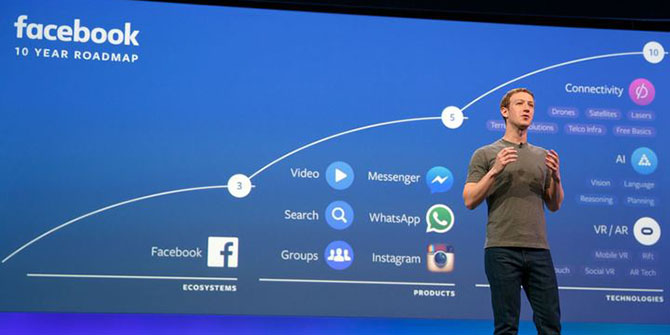In her latest blog, Msc Management of Information Systems and Digital Innovation student Sofia Klapp interviews the MISDI programme director to explain the concept of socio-technical approach to technological investment and how it can help organisations avoid the Productivity Paradox.

As a consultant for innovation and IT projects, I have frequently watched as C-level executives and IT experts within organisations ploughed forward in investing enormous amounts of money in new technologies only to fail to reach their productivity and innovation goals. Just two examples I witnessed was millions of pounds of government investment in self-service totems that were turned off because nobody used them, and a financial company that bought an AI solution for two million dollars that ended up with no discernible impact.
I was astonished: How could big companies or even governments waste so much money on new technologies without assurances that they would increase productivity or innovation? I joined the Management of Information Systems and Digital Innovation programme at LSE in part to answer this question. And I quickly found the answer. At the heart of the MISDI degree is the idea of a “socio-technical” approach to business where both the social context and technical aspects of business are combined.

One of the most thought-provoking classes during my degree was called Innovation and Information Systems: Concept and Perspectives which gave great insight into why simply investing in technology for organisations is not enough to be successful—or could even be counterproductive. To delve into this topic further, I interviewed our Programme Director, Professor Christanthi Avgerou, to find out what she has to say about making the most of technological investment. What I have learned, I would really like to share!
The Productivity Paradox:
The study of the relationships between technology investment and productivity is not something new. Since the arrival of computers to organisations, several academics and practitioners have sought to measure the impact of investing in technology on organisational performance and on national economic growth. In this context, Professor Chrisanthi explained “The Productivity Paradox”, which was identified in the US back in the 1980s. During this time, companies were investing heavily in breakthrough IT technologies of the time, like personal computers, allowing much work to be computer-mediated.
Unsurprisingly, expectations about these new technologies sky rocketed and companies expected big results. However, studies found no positive relation between such investment and productivity of a company—in fact, the rate of productivity growth of the US was decreasing.
These findings baffled economists and business people. As Professor Christanthi put it, “they started to complain that PCs were everywhere except in the economic figures”.
A new approach to making the most of technology:
Several theories arose to explain the productivity paradox but the most accepted and credible explanation was the re-design of business processes, work practices, new skills or even significant changes in the industry structure leveraged by new technologies.
These studies were made by Economics and Information Systems scholar and revealed some previously “hidden and intangible assets” that mediated the relationships between technology investment, business performance and innovation. Some well-known examples of organisational complementarities in practice were Amazon and Dell. While the first one changed the way it interacted with clients by customising the shopping experience, the second one transformed their internal operations, structures and practices to achieve a just-in-time inventory management.
A key lesson of this discovery, is that the business value of new technologies is limited less by its computational capability and more by the ability of managers to invent new processes, procedures and organisational structures that leverage this capability. However, to be successful on this challenging task, using Professor Avgerou’s words “Managers must be aware of the key role of social elements in relation to technology, such as politics, cultures, values, institutions and even regulations”. And that is what the socio-technical approach is about!
But, what does the socio-technical approach mean?
This concept sounds complicated but it really isn’t. To put it simply, the socio-technical approach means the consideration of how technology interacts with the social context in which it’s immersed. According to Professor Avgerou: “It includes the consideration of social elements such as culture, strategy, people and socio-economic situations, in order to re-organised or transform the organisation through technology”.
It goes beyond the technology-determinism perspective which make all their claims based just on technological power and hype, helping to understand why the same technology could have so extremely different results in very similar or even identical organisations. To visualise this, just think about traditional software like SAP ERP or even Moodle, a free open source learning management system that is still being used by many universities. There are plenty of stories of success and failure, and even different ways of using them across organisations.
The Productivity Paradox in the age of Artificial Intelligence and Block-chain
Today, Artificial Intelligence (AI) and Block-chain are the new technologies that promise competitive advantages to companies eager to disrupt their industries. But let’s not forget the lessons of the past. Investing in these technologies does not assure efficiency gains for any organisation. Recently, academics started to talk about the Modern Productivity Paradox, arguing that AI has not yet delivered the increased economic performance expected because of implementation lags due to the organisational transformation required.
Similarly, block-chain is just in early stages of showing results in new applications beyond the cryptocurrency use cases. To this, Professor Avgerou made an important observation: “There is too much abstract thinking about these new technologies, we will start seeing results when people start thinking about its application in a specific context”.
For example: how can AI be implemented in a specific domain? For this purpose, questions like the following are useful: What are the major actors? What are the power relationships? To what degree due their visions and understanding of the new technology differ? What are the organisational structures and processes? How will AI shape them? What are the benefits and risks of applying AI in a particular way? And more. Just as an example, it’s really different to implement a new technology in the NHS in the UK when compared to a project for the private sector. The nature of the social context matters!
Summing up, how can we make the most of technological investment today?
Practically speaking, and inspired by the socio-technical approach, I would like to propose the following lessons for managers seeking to make the most of new technology:
- Be aware of the productivity paradox, it’s still an issue with new technologies! Focusing only on technological investment is a recipe for disaster – it’s necessary but isn´t sufficient without the organisational complementarities required.
- Develop an understanding of technology applications in a specific context will unleash value. There is always too much “abstract thinking” about new technologies, the trending ones – such as AI and Blockchain– are not an exception. To unleash the power of a new technology application it’s crucial to take into account the specific socio-technical context where it might be applied.
- Achieve amazing business results by transforming organisations, root and branch, through technologies. The greatest impacts in productivity and innovation will be a consequence of the design of organisational transformations leveraged by new technologies.
- Be patient and realistic about when you can start measuring significant impacts, also you will face some bumps in the road ahead. Technology investments commonly have the greatest effect in the long term, so years of adaptation and learning are necessary before they will blow us away with amazing results.
Learn more about our MSc Management of Information Systems and Digital Innovation programme





